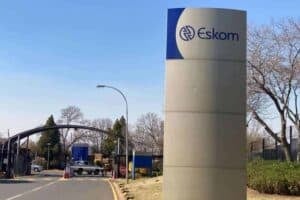Council responds to Eskom on renewables.

The Council for Scientific and Industrial Research (CSIR) on Wednesday responded to a statement from Eskom in which the power utility appeared to cherry pick from a CSIR methodology developed to calculate the net cost benefits of renewable energy to ‘prove’ that renewable energy came at a net economic cost of R9 billion in 2016.
Eskom’s statement, issued late on Tuesday night used the methodology to calculate the net value of renewable energy it buys from independent power producers (IPPs). The CSIR had used the same methodology earlier to show that the economy benefitted to the tune of R4 billion in the first half of 2015 from renewables.
Simply, the methodology offsets tariffs paid to these IPPs against the cost of load shedding avoided and the cost of the fuel Eskom saved by buying from other generators.
Eskom says that in the current environment, where electricity supply is no longer constrained, the opposite applies. By applying the CSIR methodology it shows that during 2016 renewables cost the economy dearly. According to Eskom this situation would continue as long as there is over-supply, which is expected to continue until 2020/2021.
The CSIR is however clearly not on the same page as Eskom in this regard.
In a response to the Eskom statement, the CSIR says its methodology measures only the immediate fuel saving effect on the existing fleet and not the long-term effects on new investments that an integrated resource plan would measure. Methodologically it therefore always grossly underestimates the value of a new power generator.
“The methodology was developed to be applicable during a time of a constrained power system with a high diesel turbine usage. When the power system is less constrained and diesel turbines are not operational most of the time, the methodology underestimates the diesel fuel savings. It needs to be adjusted to give the correct fuel-saving value.”
Eskom presumably did not make these adjustments.
The CSIR says only projects in Bid Windows 1 and 2 of the renewable power purchase programme were operational in 2016 (and a few BW3 projects for a few months). “These are by far the most expensive projects – and they will be for the next 18 years” (the residual time period of the 20-year power purchase agreements).
The CSIR and Eskom hold divergent views on the appropriate future energy for South Africa, with Eskom favouring nuclear to supplement intermittent renewable energy and the CSIR arguing for increased renewable energy supplemented by gas-fired power generation.
“South Africa effectively got a ‘discount’ on these expensive projects for the first two or three years when the power system was (and partially still is) constrained. The discount stems from avoided load shedding and from diesel fuel savings,” the CSIR says.
“Both effects were not anticipated when the decision was made to implement these expensive projects. South Africa essentially made an investment decision into new power generator technologies, knowing that those of the first rounds are expensive and school fees need to be paid. Because of the coinciding constrained-ness of the power system during the time when these power generators came online and worked as ’emergency supplement’, the country received a ‘discount’ on the cost of them for the first few years.”
According to the CSIR the real value in the projects of Bid Windows 1 to 3 lies in the fact that “without them the country would not have been able to bring the cost for new solar PV and wind down to the latest achieved 0.62 R/kWh – which is 40% cheaper than new coal.”
The CSIR says while the operational solar PV and wind projects (of Bid Windows 1 and 2) triggered tariff payments of roughly R12 billion in 2016 and produced roughly 6 TWh in the same year, the entire BW4 solar PV and wind projects (original, additional and expedited) will trigger tariff payments of merely R6.6 billion per year, while they will produce more than 9 TWh/yr.
“That means 45% less annual payments for 50% more energy, compared to the currently operational solar PV and wind projects. These new projects will therefore be almost cost neutral from a pure fuel-saving perspective (i.e. the entire cost of the new car is similar to the cost of the fuel only for the existing car).”
-Brought to you by Moneyweb






